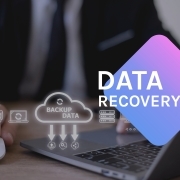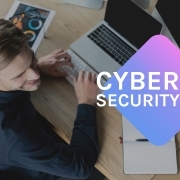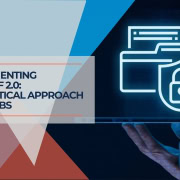Defeat Ransomware: Guide for Prevention, Detection & Recovery
Last Updated on May 3, 2023
Table of Contents
- 1 Understanding Ransomware
- 2 Detecting a Ransomware Infection
- 3 Immediate Steps After a Ransomware Attack
- 4 Data Recovery and Decryption
- 5 Eliminating the Ransomware Threat
- 6 Preventive Measures Against Future Ransomware Attacks
- 6.1 Keep Your Software Updated
- 6.2 Enable Ransomware Protection Features
- 6.3 Regular Backups
- 6.4 Be Cautious Online
- 6.5 Use Strong and Unique Passwords
- 6.6 Install a Reliable Antivirus
- 6.7 Implement a Firewall
- 6.8 Train Employees on Cybersecurity
- 6.9 Enhancing Email Security
- 6.10 Use Email Filtering
- 6.11 Enable Spam Filtering
- 6.12 Implement Two-Factor Authentication (2FA)
- 6.13 Beware of Phishing Attacks
- 6.14 Regular Security Audits
- 6.15 Vulnerability Scanning
- 6.16 Penetration Testing
- 7 Conclusion
Understanding Ransomware
Ransomware is malicious software that encrypts the victim's files, rendering them inaccessible until a ransom is paid to the attacker. These attacks target individuals and organizations, frequently leading to considerable disruptions and financial losses. Nevertheless, you can implement effective measures to prevent, identify, and recover from such an attack by grasping the intricacies of ransomware.
Detecting a Ransomware Infection
Ransomware can be challenging to detect until it's too late. Typically, the malware will notify the victim once the encryption process is complete. Signs of a ransomware infection may include:
- Inability to open or locate personal files
- Unexpected file extension changes
- Ransom messages displayed on your computer
By keeping an eye on file activity and stepping in when something seems off, reliable antivirus software can help identify ransomware.
Immediate Steps After a Ransomware Attack
If you suspect your computer has been infected with ransomware, take the following steps:
- Document the ransom message: Take a photo of the ransom message using a phone, as it may contain valuable information for later use.
- Disconnect from the network: Unplug the network cable or disconnect from Wi-Fi to prevent the malware from spreading to other devices or communicating over the internet.
- Disconnect external storage devices: Unplug USB storage devices to prevent the ransomware from encrypting their data.
Data Recovery and Decryption
Recovering encrypted data can be challenging, but there are several resources available to help:
- Identify the ransomware variant: Use services like MalwareHunterTeam or NoMoreRansom to identify the specific ransomware variant affecting your system.
- Find a decryption tool: Once you've identified the variant, search for one that can remove the ransomware and restore your files. Resources include NoMoreRansom, Avast Ransomware Decryption Tools, and reputable security blogs.
- Run antivirus scans: Use your antivirus software to thoroughly scan your computer and connected media to eliminate the ransomware.
Eliminating the Ransomware Threat
To completely remove the ransomware and prevent future infections:
- Reinstall your operating system: To completely remove malware from your system, we suggest doing a clean installation of Windows and deleting all data on your system drive.
- Change all passwords: Update the passwords for all your online services to ensure the attacker hasn't accessed your sensitive information.
Preventive Measures Against Future Ransomware Attacks
To protect your computer and data from future ransomware attacks, implement the following best practices:
Keep Your Software Updated
Regularly update your operating system, software, and antivirus programs to protect against new vulnerabilities and threats.
Enable Ransomware Protection Features
Activate built-in ransomware protection features in Windows 10, Windows 11, or your antivirus software to add an additional layer of security.
Regular Backups
Perform regular data backups to an external storage device or a cloud storage service. Then, in case of a ransomware attack, you can quickly restore your data from the backup.
Be Cautious Online
Exercise caution when visiting websites, downloading files, or opening email attachments. Stick to trusted sources and avoid clicking suspicious links or downloading files from unknown sources.
Use Strong and Unique Passwords
Create strong, unique passwords for all your accounts and avoid reusing the same password across multiple services.
Install a Reliable Antivirus
Invest in a reputable antivirus solution that offers real-time protection and regular updates to defend against the latest ransomware variants.
Implement a Firewall
A firewall can help prevent unauthorized access to your computer by blocking suspicious incoming and outgoing connections.
Train Employees on Cybersecurity
If you're running a business, ensure your employees are well-trained in cybersecurity best practices, including recognizing phishing emails, suspicious websites, and other potential threats.
Enhancing Email Security
Email is a common attack vector for ransomware and other types of malware. Strengthen your email security by implementing the following practices:
Use Email Filtering
Enable email filtering options provided by your email service or use a third-party email filtering solution. These filters can help identify and block malicious emails before they reach your inbox.
Enable Spam Filtering
Spam filters can help identify and block emails from known malicious sources or those containing questionable content, reducing the likelihood of ransomware infection.
Implement Two-Factor Authentication (2FA)
Two-factor authentication adds an extra layer of security to your email account by requiring an additional verification method, such as a text message or authentication app, along with your password.
Beware of Phishing Attacks
Educate yourself and your employees on how to recognize and avoid phishing attacks. For example, never click on links or download attachments from unknown or suspicious sources, and always verify the sender's email address.
Regular Security Audits
Perform regular security audits to identify vulnerabilities in your computer systems and network. These audits can help you pinpoint weaknesses that may be exploited by ransomware and other types of cyber threats.
Vulnerability Scanning
Use vulnerability scanning tools to identify potential weaknesses in your systems, such as outdated software or misconfigurations.
Penetration Testing
Penetration testing simulates a cyberattack on your systems to evaluate their security and identify potential vulnerabilities. Use the results of these tests to improve your security measures and protect against ransomware attacks.
Conclusion
Ransomware attacks continue to pose a significant threat to individuals and organizations worldwide. Understanding the nature of these attacks and taking proactive measures can significantly reduce the risk of falling victim to ransomware. Ensure your systems are up-to-date, use reliable antivirus and firewall protection, and regularly back up your data. In addition, remain cautious when interacting with emails and websites, and invest in employee cybersecurity training.
By combining these preventive measures with a robust response plan, you can effectively safeguard your valuable data and minimize the impact of a ransomware attack. Remember, preparedness and vigilance are your best allies in the ongoing battle against cyber threats.










Leave a Reply
Want to join the discussion?Feel free to contribute!